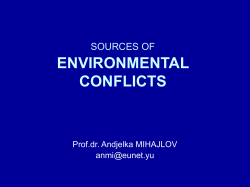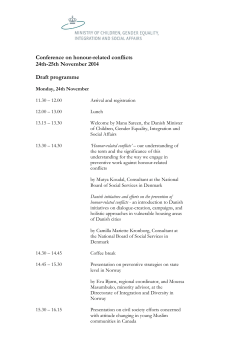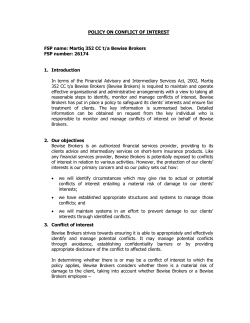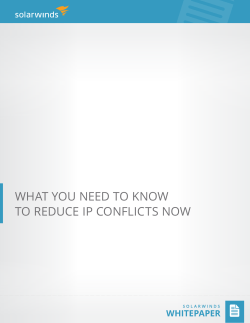
Preventing and Mitigating Violent Conflict
PREVENTING AND MITIGATING VIOLENT CONFLICTS A Guide for Practitioners 19 I.E. VIOLENT CONFLICTS: EMERGENCE AND CESSATION Conflicts evolve over time as hostilities emerge, grow and abate. Figure 2 below depicts the stages— early, middle, and late—and levels of a dispute that becomes violent.3 The horizontal axis represents the stages of the conflict over time, distinguishing between early, middle and late phases. The vertical axis measures the amount of conflict in terms of the degrees of cooperation or hostility between the parties. The arcing line across the diagram portrays the conflict as hostilities rise and fall. Figure 1. Life Cycle of a Conflict The smooth curve in Figure 1 is highly simplified. Of course, specific conflicts can exhibit a variety of trajectories, thresholds, jumps or discontinuities. Conflicts that have ceased can re-ignite. Generally, however, violent conflicts exhibit periods of initial growth, full-blown antagonism, and eventual abatement. While observers may disagree about a particular conflict’s position on this diagram, differentiation according to a conflict’s level and stage is useful in diagnosing the conflict prior to selecting policy interventions. 3 Clicking on any portion of the Life Cycle curve in the web-based version of this Guide will take the reader to a detailed table showing the stage of conflict along with types of possible interventions and specific forms (tools) of each intervention. 20 PREVENTING AND MITIGATING VIOLENT CONFLICTS A Guide for Practitioners I.E.1 Dynamics of Escalation Escalation may be vertical—that is, hostile behavior becomes more intense—or horizontal—hostile behavior of the same intensity spreads over a larger area. Escalation can take both forms. Escalation can be caused by the parties themselves or by actions that third parties take. Spiraling conflicts are fueled by a straightforward set of social-psychological phenomena. People become more committed to a struggle as they get more involved. A sense of urgency takes over. Pressure to make decisions quickly narrows options to little more than existing courses of action. The psychological investment imposed by conflict shapes each side’s perceptions of the other: one’s own cause seems just, while the other side’s seems evil. Stereotyping and dehumanizing the opposition feed parties’ positions, justifying acts of brutality. Positions become rigid when leaders announce them publicly. Backing down becomes more difficult, and, if there is competition for leadership, rivals promote their interests by questioning the leadership’s dedication to the struggle. Under these conditions, moderates may quit or be driven out, leaving leadership to militants. Commitment to fight increases. Once violent conflict starts, military specialists gain influence over the government’s or organization’s leadership and policies. Fighting raises additional issues and grievances, adding more reasons to pursue the struggle. As escalation proceeds, aggrieved parties feel justified in striking back, and vice versa. Coercion and violence discourage communication between the parties, limiting opportunities to compromise on issues of contention. A lack of retaliation may be perceived as weakness and lead the attacking party to escalate the conflict. Larger conflicts may force third parties to intervene on one side or promote their own interests. Once one party enters a conflict, others may follow. I.E.2 Early Warning Preventive action requires early intervention to be most effective. Policy-makers must know how to recognize signs of impending conflict in order to make informed decisions and marshal the resources required to head off violence. Anticipating possible conflicts is not a matter of predicting specific events and their timing--that is impossible. Instead, early warning means assessing the probabilities that certain events will lead to violence. This requires reliable information on a range of conditions—border crises, disintegrating regimes, civil wars, genocide, human rights abuses, refugee flows—and estimating how they are likely to change. Threats to security and national order emerge from many sources: e.g. commodity price fluctuations, demonstrations, government policies, social movements, political infighting, leaders’ attitudes, and arms flows. At the same time, tension and political turmoil are inevitable in economic and political transitions. The objective is to assess when such changes are likely to yield violent conflict. Monitoring and PREVENTING AND MITIGATING VIOLENT CONFLICTS A Guide for Practitioners 21 information-gathering must reach deeply into a country’s social fabric and grassroots politics to identify possible sources of conflict. Table I-2, drawing on recent research into early warning systems, illustrates some of the proximate and immediate warning signs that analysts have posited as indicators of possible civil wars, genocides, secessionist wars, or failed states.
© Copyright 2025





















